"A Date Which Will Live In Infamy"
Tue Dec 07, 2010 9:07 am
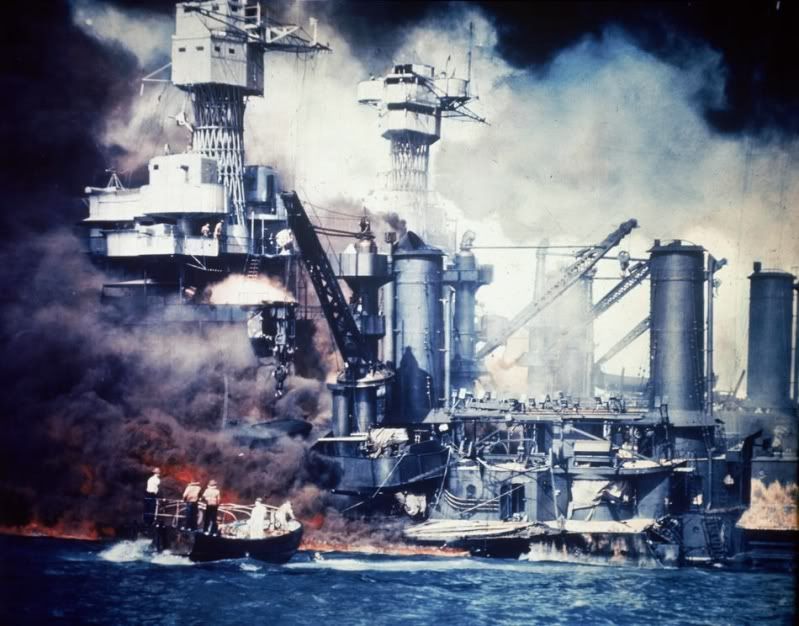 USFG PHOTO
USFG PHOTOU.S. Navy sailors in a motor launch rescue a survivor from the water alongside the sunken battleship USS West Virginia (BB-48) during or shortly after the Japanese air raid on Pearl Harbor, 7 December 1941. USS Tennessee (BB-43) visible behind West Virginia. Note extensive distortion of West Virginia´s lower midships superstructure, caused by torpedo hits below. Also note 5"/25 gun, still partially covered with canvas, boat crane swung outboard and empty boat cradles near the smokestacks, and base of radar antenna atop West Virginia´s (BB-48) foremast.
 USFG PHOTO
USFG PHOTO9:25AM December 7, 1941.: USS Nevada beached and burning after being hit forward by Japanese bombs and torpedoes. Her pilothouse area is discolored by fires in that vicinity. The harbor Tugboat Hoga (YT-146) is alongside Nevada's port bow, helping to fight fires on the battleship's forecastle. Note channel marker bouy against Nevada's starboard side.
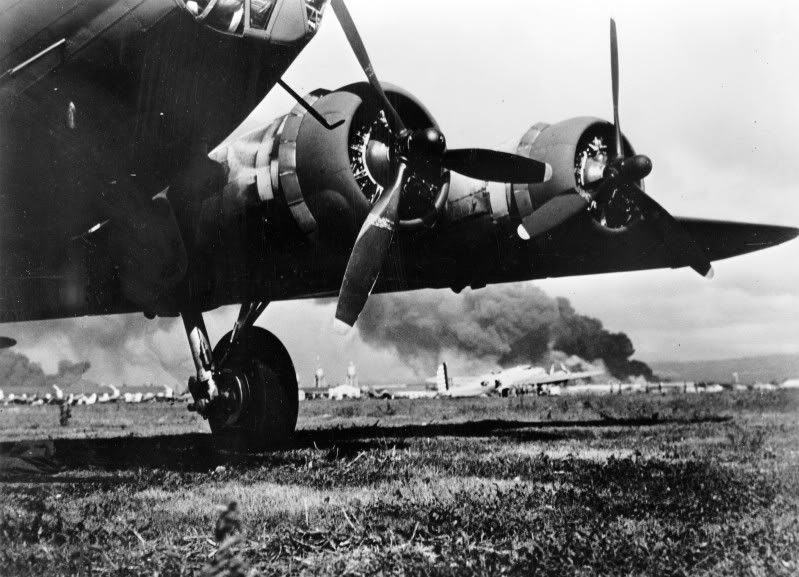 USFG PHOTO
USFG PHOTOA photo taken at Hickam Air Base during the Japanese attack on 7 December 1941. A camouflaged Boeing B-17E Flying Fortress is in the foreground, a silver B-17D is visible in the background.
 USFG PHOTO
USFG PHOTOA U.S. plane shot down by a Japanese Mitsubishi A6M2 Zero (visible overhead) burns in the woods near Ewa, Oahu, Hawaii, during the Pearl Harbor attack, on 7 December 1941. This image was taken from a USAAF B-17 Flying Fortress arriving in Hawaii from the West Coast on the morning of 7 December 1941.
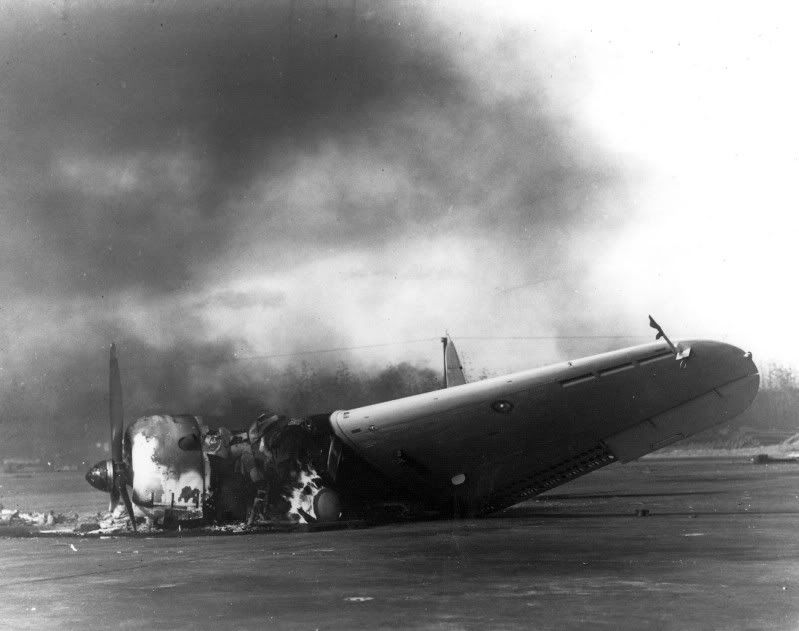 USFG PHOTO
USFG PHOTOThe burning wreckage of an U.S. Marine Corps Douglas SBD Dauntless dive bomber pictured at Ewa Mooring Mast Field (later Marine Corps Air Station (MCAS) Ewa, Hawaii) after the Japanese attack on 7 December 1941.
 USFG PHOTO
USFG PHOTOUSS Arizona.
 usfg photo
usfg photoUSS Phoenix (CL-46) steams down the channel off Ford Island's "Battleship Row", past the sunken and burning USS West Virginia (BB-48), at left, and USS Arizona (BB-39), at right, 7 December 1941.
 USFG PHOTO
USFG PHOTOPlanes and hangars burning at Wheeler Field during the Japanese attack on Pearl Harbor, 7 December 1941.
 USFG PHOTO
USFG PHOTO* Sandbagged .30 caliber machine gun emplacement with gun crew on alert, at the seaplane base near Ford Island's southern tip, soon after the Japanese attack.
Note wind sock atop hangar at right, PBY patrol plane warming up by the corner of the hangar, another PBY in the center distance, and three SOC floatplanes at left with the beached battleship Nevada (BB-36) beyond. Sandbags are marked "Permanente".
 USFG PHOTO
USFG PHOTOPhoto shows a scene from shortly after the bombing of Hawaii by Japanese forces on December 7, 1941. The impromptu machine gun nest was built in a bomb crater and reinforced with salvaged aircraft motors.
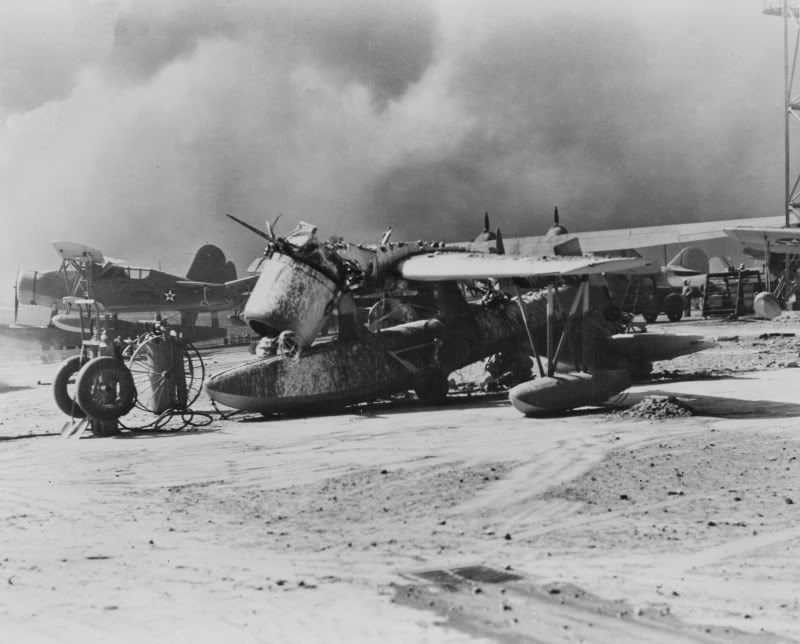 USFG PHOTO
USFG PHOTOA wrecked U.S. Navy Vought OS2U Kingfisher at the Naval Air Station Ford Island, Pearl Harbor, Hawaii (USA), on 7 December 1941. Note the Curtiss SOC Seagull and the Consolidated PBY Catalina in the background. The SOC is marked "Commander Scouting Force".
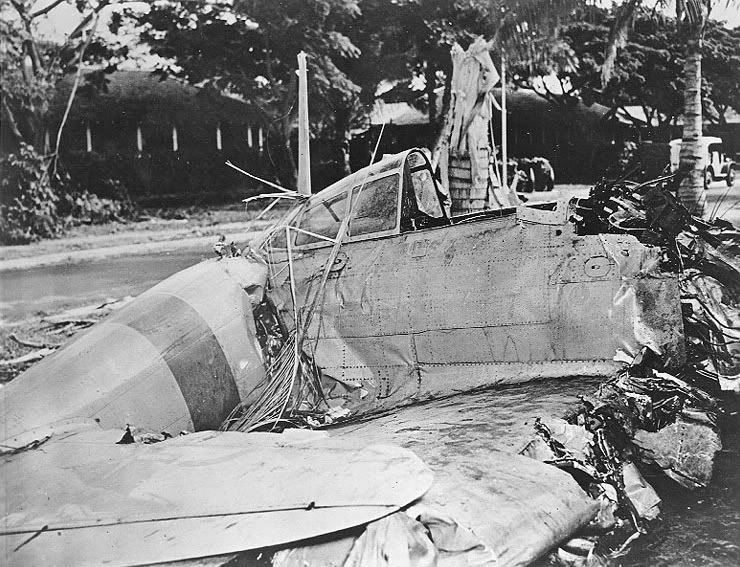 USFG PHOTO
USFG PHOTOjapanese Type 00 Carrier Fighter ("Zero") that crashed at Fort Kamehameha, near Pearl Harbor, during the attack on Pearl Harbor December 7, 1941. This plane, which had tail code "A1-154" and a red band around its rear fuselage, came from the aircraft carrier Akagi.
 USFG PHOTO
USFG PHOTOTitle: Click to add (Edit)
Japanese Navy Type 00 Carrier Fighter (A6M2) Interior of the cockpit of a "Zero" which crashed into Building 52 at Fort Kamehameha, Oahu, during the 7 December 1941 raid on Pearl Harbor. The pilot, who was killed, was NAP1/c Takeshi Hirano. Plane's tail code was "AI-154"
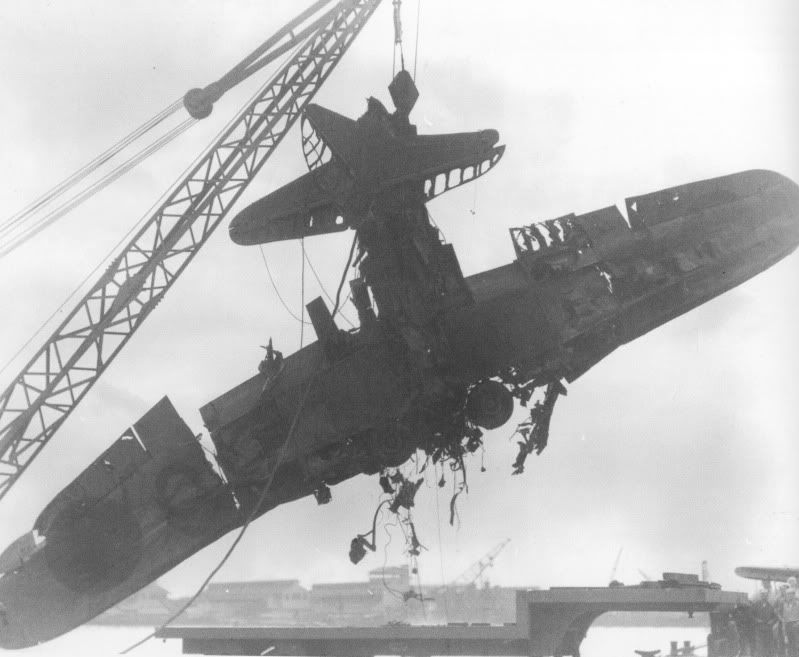 USFG PHOTO
USFG PHOTOA Nakajima B5N Type 97 level/torpedo bomber from the Imperial Japanese Navy aicraft carrier Kaga is hoisted from the water of Pearl Harbor after the attack on 7 December 1941. This aircraft was commanded by Lieutenant Suzuki Mimori and he and the other two crewmembers of the aircraft were killed when the aircraft was shot down during the attack. The aircraft was one of five Kaga B5N lost in the attack on battleship row along with their crews during the first wave of attacks on the harbor.
 USFG PHOTO
USFG PHOTOFollowing Hawaiian tradition, Sailors honor men killed during the 7 December 1941 Japanese attack on Naval Air Station Kaneohe, Oahu. The casualties had been buried on 8 December. This ceremony took place sometime during the following months, possibly on Memorial Day, 31 May 1942.
A lot of good people lost their life that day, & more would be lost in the years that followed let's never forget them!
Re: "A Date Which Will Live In Infamy"
Tue Dec 07, 2010 6:09 pm
Lucky the carriers were at sea...
And for the people of the British Commonwealth, please remember the 8th that came before the 7th, the brave men of No. 1 Squadron RAAF, Lockheed Hudsons, attacking the Japanese landing in Malaya, hours before Pearl Harbor.
http://vintageaeroplanewriter.blogspot. ... e-7th.html
In memoriam,
And for the people of the British Commonwealth, please remember the 8th that came before the 7th, the brave men of No. 1 Squadron RAAF, Lockheed Hudsons, attacking the Japanese landing in Malaya, hours before Pearl Harbor.
http://vintageaeroplanewriter.blogspot. ... e-7th.html
In memoriam,
Re: "A Date Which Will Live In Infamy"
Tue Dec 07, 2010 6:48 pm
B-24A 40-2371, reported in some sources as the first airplane destroyed on the morning of 7 December at Hickam.

Very good point regarding the Commonwealth, JDK.
Scott

Very good point regarding the Commonwealth, JDK.
Scott
Re: "A Date Which Will Live In Infamy"
Wed Dec 08, 2010 12:17 am
Few places take the smile off your face faster than standing over the remains of the USS Arizona. It’s a very sobering place to be, and it’s a shame so few Americans ever get to see it in person. I was lucky enough to be able to see Pearl Harbor during our Hawaii trip a few years ago (I made it clear I wasn’t leaving the Island until I went there).
I took this at an airshow a year later and made this up with photoshop. I’ve made it a point to e-mail this photo to friends every December 7th in years past:
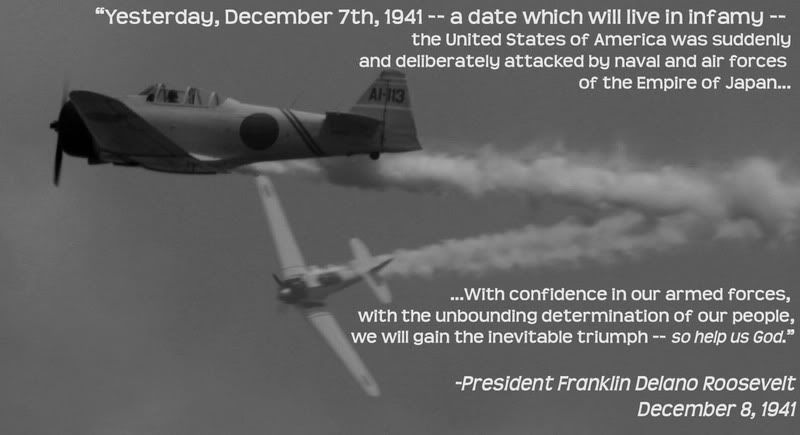
I took this at an airshow a year later and made this up with photoshop. I’ve made it a point to e-mail this photo to friends every December 7th in years past:
